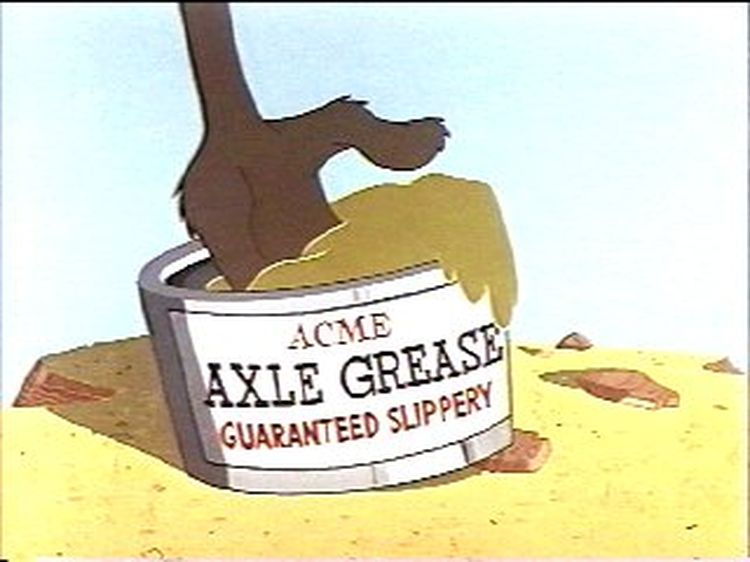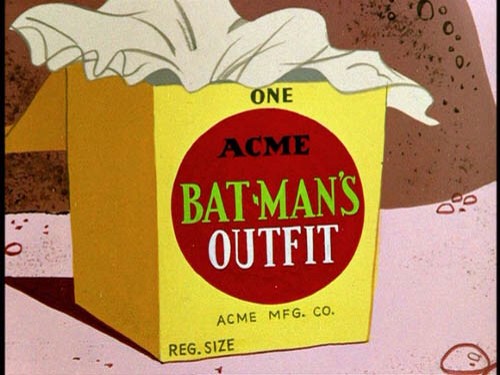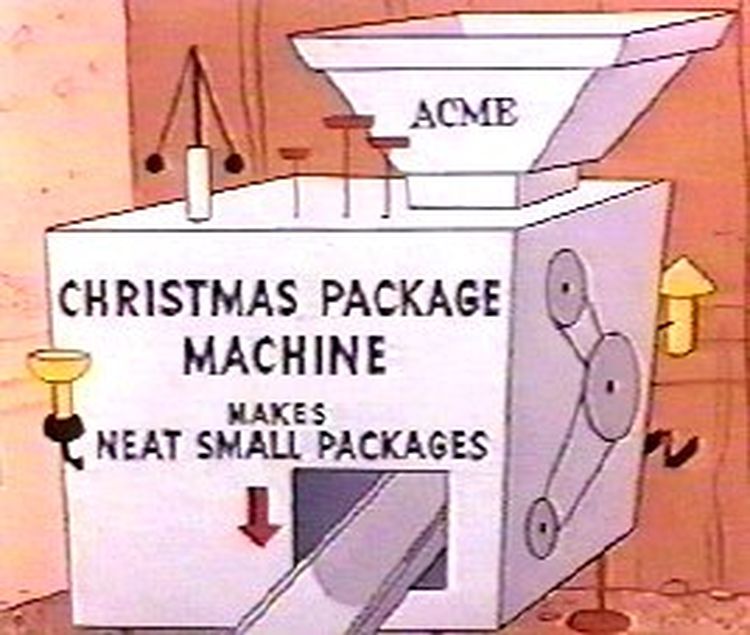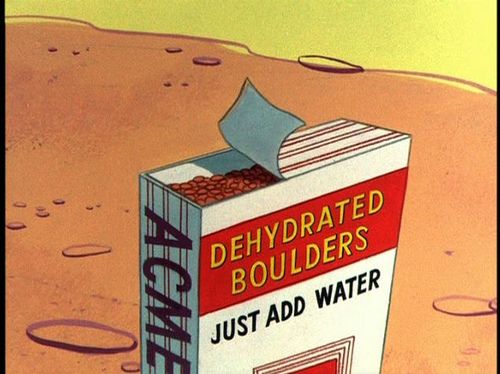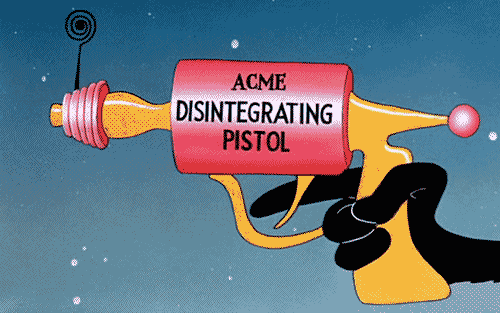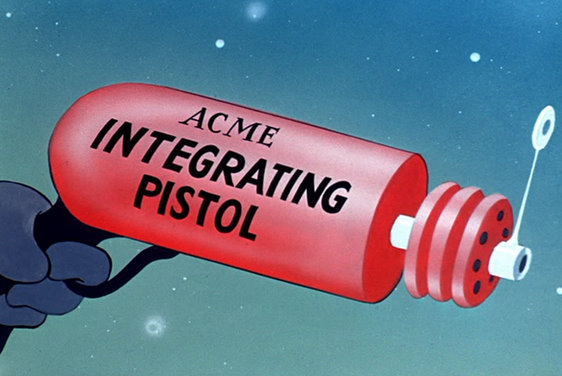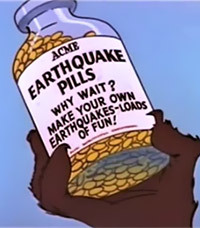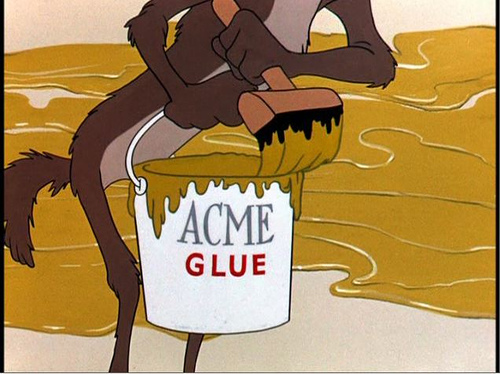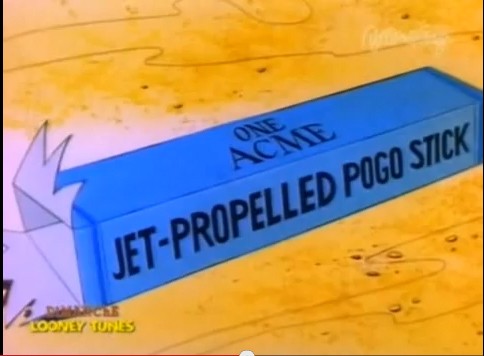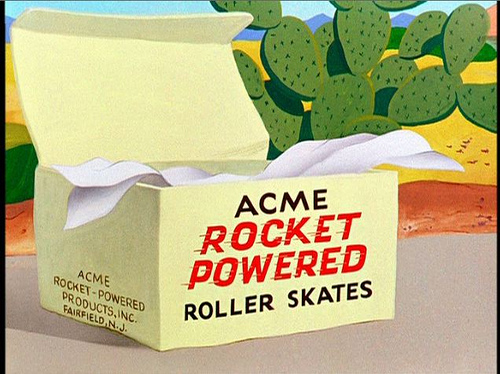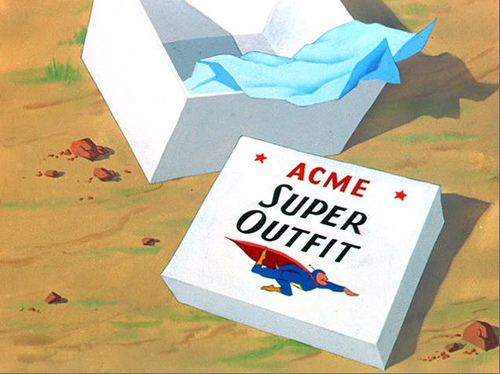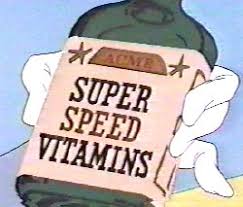Warner Bros. made immortal the Acme brand name when they brought it to life in their cartoons. You may remember some of them being used by the coyote while chasing the road runner:
And the list goes on and on, since Acme products are featured in several other shows, including Merrie Melodies, Tiny Toon Adventures, Animaniacs and Pinky and the Brain.
Acme sold an assortment of things for all needs from all industries, including weapons, pharmaceutics and foods. Sometimes, Acme can also send living creatures through the mail, though that isn't done very often. Two examples of this are the Acme Wild-Cat, which had been used on Elmer Fudd and Sam Sheepdog (which doesn't maul its intended victim, but the owner instead); and Acme Bumblebees in one-fifth bottles (which sting Wile E. Coyote). The Wild Cat was used in the Looney Tunes' shorts Don't Give Up the Sheep and A Mutt in a Rut, while the bees were used in the Merrie Melodies' short Zoom and Bored.
But Warner Bros. didn't invent the brand. The name Acme became popular for businesses by the 1920s, when alphabetized business telephone directories such as the Yellow Pages began to be widespread. An early global Acme brand name was the 'Acme City' whistle made from mid 1870s onwards by J Hudson & Co, followed by the 'Acme Thunderer', and Acme Siren in 1895. There was a flood of businesses named Acme, including Acme Brick, Acme Markets, and Acme Boots. Early Sears catalogues even contained a number of products with the "Acme" trademark, including anvils, which are frequently used in Warner Bros. cartoons.
Warner Brothers animator Chuck Jones has said the name Acme was chosen because of its prevalence:
Since we had to search out our own entertainment, we devised our own fairy stories. If you wanted a bow and arrow you got a stick. If you wanted to conduct an orchestra you got a stick. If you wanted a duel you used a stick. You couldn't go and buy one; that's where the terms acme came from. Whenever we played a game where we had a grocery store or something we called it the ACME corporation. Why? Because in the yellow pages if you looked, say, under drugstores, you'd find the first one would be Acme Drugs. Why? Because "AC" was about as high as you could go; it means the best; the superlative.
— Chuck Jones in the "Chuck Jones: Memories of Childhood" documentary (video available here).
The name Acme also had other connotations for people in Los Angeles at the time. During the time the Warner Bros. cartoons were being produced, the traffic lights in Los Angeles were manufactured by the Acme Traffic Signal Company. The traffic lights paired “Stop” and “Go” semaphore arms with small red and green lights. Bells played the role of today’s amber or yellow lights, ringing when the flags changed—a process that took five seconds. The Acme semaphore traffic lights were often used in Warner Bros.' Looney Tunes and Merrie Melodies cartoons for comedic effect due to their loud bell which was often followed by screeching tires and many sight gags.
Sources: Wikipedia, Looney Tunes Wiki and others.
